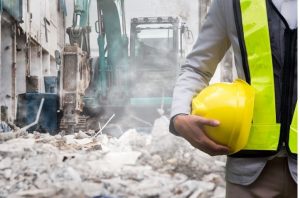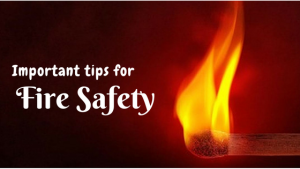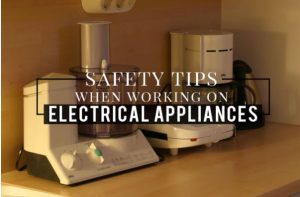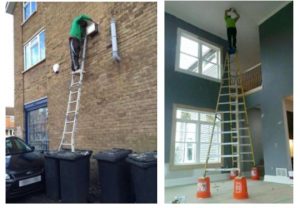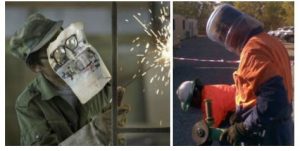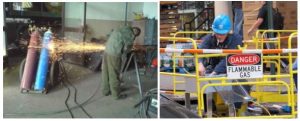Away from Home: Protection of Health & Safety for Migrant Workers
Studies reveal that more than 300 million people in the world are currently living outside their country of origin, and they form about 3.3% of the world’s population. They are the migrant workers who move to developed nations in search of work. They are crucial to the economy of their country of origin as they keep sending remittances home for their families.

We all know them, for they are around us, doing the jobs that we would never even think of doing in our worst nightmares. Going down the sewers of the city, unclogging drains, cleaning dishes at hotels and restaurants, cleaning dirty laundry, taking care of us at hospitals, cleaning glass panes at skyscrapers, and building bridges and dams – these are the jobs of the migrant workers of the world. The jobs they are involved in are called 3D jobs, for they involve ‘dangerous’, ‘demeaning’ and ‘dirty’ tasks.
They are subject to plenty of occupational hazards at the workplace, owing to their working conditions and wages. Hence, the need to look after the protection of basic health and safety is one of the key concerns at the UNO and WHO.
Health and safety risks in 3D jobs
Health and safety risks are a part of being involved in 3D jobs, and the migrant working population all around the world is facing the following hazards at the workplace every day.
⦁ Environmental risks and hazards at work
The inherent occupation setting of the jobs that migrant workers are involved in has some resultant environmental hazards, and they are as follow.
⦁ Exposure to chemicals – exposure to formaldehyde, dibutyl phthalate, toluene, and ammonia
⦁ Exposure to pesticides – pesticides causing respiratory illnesses, cancer, and dermatitis
⦁ Exposure to hostile temperatures – exposure to extreme heat or cold, often sub-zero temperatures, ice-cold water or high-heat environments
⦁ Health and safety risks due to working conditions
Most employment sectors for migrant workers are physically demanding. They require the workers to toil so that the job gets done. Cleaning sewers, clearing roadblock or rubble, constructing buildings, bridges or dams are all physically demanding jobs. To add to that, they have their fair share of workplace problems as well. Here are a few of the workplace risks that migrant workers face days in and days out.
⦁ Denial of basic workplace rights – lack of official contracts, no guarantees on timely paychecks, high-stress and fast-paced work environment, trauma disorders from repetitive motion and accidents, and lack of basic sanitation facilities
⦁ Physical danger – Potential muscle strains and tears, infections, musculoskeletal injuries, exposure to dangerous equipment, exposure to big cutting tools, open flames and fire hazards, and falls
⦁ Abuse at the workplace – outright physical harassment, emotional trauma, discrimination and slurs, shows of disrespect from reporting managers, unfair work assignments, sexual abuse and violence, verbal abuse, and withholding of food
⦁ Trafficking and coercion – forced labor, human trafficking (especially among women and children), and very low-paying jobs involving a huge amount of physical labor
⦁ Lack of safety gear – lack of safety contracts, limited personal protection equipment, additional charges levied on safety gear, no proper safety training, and low levels of compliance in using safety equipment
Major factors affecting health and safety of migrant workers
When compared to native workers, migrant workers are at a greater risk of having poor health and safety infrastructure. This is a worldwide phenomenon, and there are reasons aplenty why it continues to be one of the major concerns for migrant workers. Here are the prime factors influencing the healthcare and safety status of migrant workers on a global spectrum.
⦁ Lack of proper health care services or access to healthcare services designed especially for migrant workers is an essential factor that needs to be addressed at the earliest. Poverty, lack of proper documents, erratic employment status, and limited knowledge of healthcare privileges are some of the main obstacles that they must overcome for better health and safety protection.
⦁ Gender discrimination issues remain one of the major concerns for the migrant working population. Females are more likely to be subject to higher cancer rates, poor mental health and occupational injuries. Women workers are denied of their basic rights to reproductive and sexual healthcare, making migrant women mortality rates shoot through the roof.
⦁ Hindrances in language and culture are also huge determinants when it comes to the health and safety of migrant workers. Given that a large portion of the migrant workers does not speak the dominant language in the country of their employment, they are more prone to occupational hazards. They are most often assigned the more risky jobs for their lack of expertise in the language.
⦁ Political factors and state policies, of course, determine the entire framework of migrant employment in the country. This is where we need to look closely, for better policies and actionable implementation can help bring about a positive change for the migrant worker population all around the world.
⦁ Employment and immigration status plays a huge role in the shaping of the future of migrant workers who move to more developed countries in search of better livelihood prospects. Migrant workers without proper legal authorization are prone to more occupational risks than the documented ones. Since undocumented workers are far less likely to lodge official complaints against the employer in spite of workplace violations, they are put in more dangerous jobs. Neglecting the health and safety factors for undocumented workers is thus commonplace in most countries that employ migrant workers.
Protection of health and safety factors for migrant workers
It is 2018, but rampant discrimination all over the world continues to separate the migrant workforce from the native ones. However, the following methods can work towards eliminating the thin line of discrimination and bring about better health and safety measures for migrant workers the world over.
⦁ Formulation of policies by focusing on health and safety issues for migrant workers
The need to formulate policies that are significant in the struggles of migrant workers is real. The Sustainable Development Goals, for example, can be a good place to start, keeping in mind the problems that migrant workers face all around the world. The health factors should be included in the policies, and must focus on the issues from a global perspective.
⦁ Organizing widespread awareness campaigns and interventions regarding policies
Formulating policies alone won’t cut it, since the word needs to reach the workers themselves. The public health approach can provide an equitable solution regarding this matter. Interventions and awareness campaigns that deal with disease prevention training and improved healthcare facilities are thus the need of the day. Migrant worker populations will benefit from these campaigns, with improved knowledge on health and safety issues at work.
⦁ Fortifying health monitoring and health information systems
Using health monitoring systems for keeping a track of the health hazards and conditions for migrant workforces is imperative so that better healthcare facilities and resources can be provided. Once a proper health monitoring system is established globally, member nations can conduct and share research and insights regarding the condition of health and safety matters for migrant workers.
⦁ Betterment of safety training for migrant workers
Providing information and adequate training for migrant workers so that they can be more careful in their workplaces is also an essential part of promoting their health and safety factors. They should be made aware of the occupational hazards and the ways that they can prevent accidents at work during the training. The purpose and use of protective or safety gear and work equipment must form a vital section of the training program.
⦁ Organizing awareness campaigns for the well-being of women and children
Women and children are among the ones who are mostly at the receiving end of problems arising due to poor health and safety conditions for migrant workers globally. Essential health care services and sexual and reproductive healthcare packages should be put on priority lists of provisions for migrant workers. Maternal, neonatal and postnatal healthcare provisions and sanctions for women migrant workers should also be making it to the list of must-haves.
⦁ Combating xenophobia and improving communication
Migration and displacement act in strange ways to instill baseless fears, apprehensions and prejudices in the minds of the workers and recruiters alike. Since most migrant workers enlist themselves as semi-skilled or unskilled labor, it is obvious that such prejudices arise from the lack of proper educational resources. However, organizing awareness campaigns to counter xenophobia and other prejudices is a huge step towards improving the mental health of migrant workers.
⦁ Pairing up with inter-country and inter-agency collaborators
The United Nations and WHO are two of the most important organizations that need to be kept in the loop of migrant workers’ health and safety policies and their implementation. At the governance level, state heads and cabinet members must come together to establish programs and policies that uphold the rights of migrant workers in their respective countries. Ringing in better coordination and developmental health sectors, the government and global organizations must work in parity with the global working conditions for migrant workers.
⦁ Promoting gender equality and empowerment programs
Most migrant workers hail from developing countries, and have their own perceptions of gender roles. However, the need to emancipate them from the shackles of age-old patriarchal mindset is the only way to educate them towards self-awareness. Hosting gender equality and awareness campaigns designed for both men and women is thus one of the most effective ways to educate and enlighten them about revamped gender roles in a developed country.
⦁ Reinforcing fairness in recruitment processes and policies
Fairness in recruitment processes and policies can also bring about a whole world of change when it comes to ensuring safety and proper healthcare for migrant workers. Many migrant workers fall prey to fraudulent practices and sham agencies that exploit them economically and sexually with false promises of high-paying jobs. Migrant workers often put themselves in debts to secure a job in a developed country through fake recruitment agencies. Ensuring a fair recruitment process can thus bring about a positive change in health and safety measures for migrant workers all around the world.
Parting words
Migrant workers are part of a global community, recruited in jobs that are considered too dirty, demeaning or dangerous. Hence, they deserve every bit of respect and basic healthcare and safety measures, just like any other citizen. Protection of their healthcare and safety rights is thus a global responsibility. Fair and just policies and their implementation at all levels can make sure that migrant workers have a better work environment and access to health care services, regardless of what their immigration status is.
If these workers can put their lives and health at risk to ensure that we have clean sewers, better roads and warm food at our tables, shouldn’t we all be doing our bit to ensure that they gain access to basic health and safety rights? It is time to ponder over health and safety issues of millions of migrant workers worldwide, and adopt ways that we can help them attain basic human rights.
Author bio:
Gracie Anderson, a public policy expert based in Brisbane, and a ghost writer by choice at My Assignment Help. She likes to share her wisdom and expertise on administrative policymaking and governance with students struggling with their academics.


